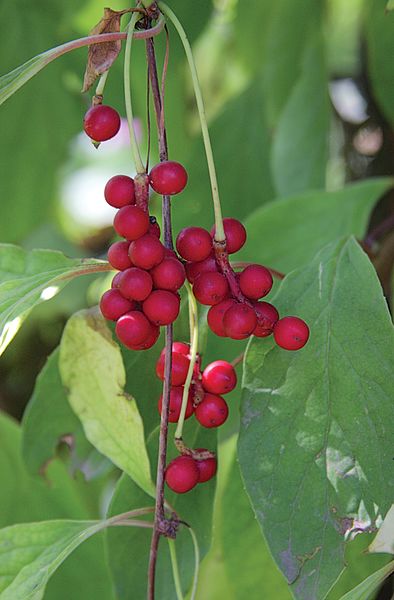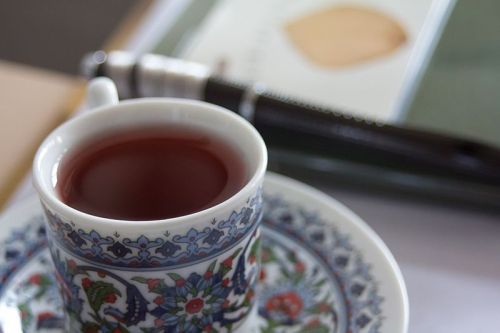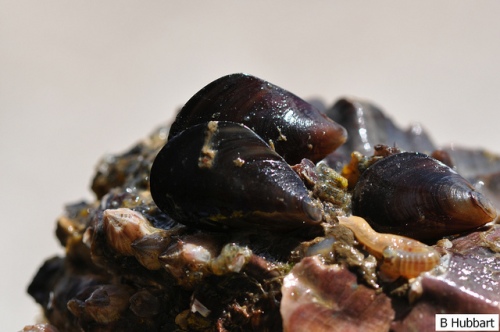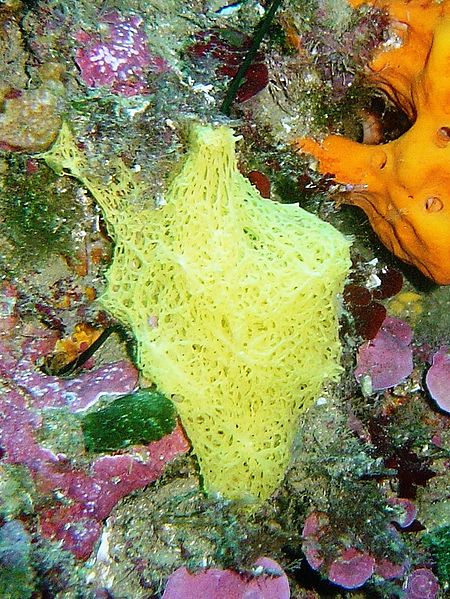by Piter Kehoma Boll
Few people know that land planarians exist, but when they do, they most likely know the hammerhead flatworms, which comprise the subfamily Bipaliinae.
The hammerhead flatworms, or simply hammerhead worms, have this name because their head has lateral expansions that make them resemble a hammer, a shovel or a pickaxe. Take a look:
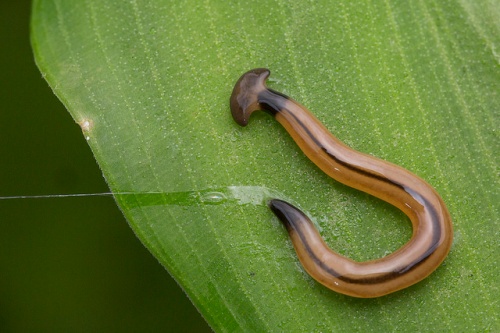
The “wandering hammerhead worm”, Bipalium vagum. Notice the peculiar head. Photo by flickr user budak.*
The Chinese knew the hammerhead worms at least since the 10th century, which is understandable, since they are distributed from Japan to Madagascar, including all southern and southeast Asia, as well as Indonesia, the Philippines and other archipelagos. The western world, however, first heard of them in 1857, when William Stimpson described the first species and put them in a genus called Bipalium, from Latin bi- (two) + pala (shovel), due to the head shape. One of them was the species Bipalium fuscatum, a Japanese species that is currently considered the type species of the genus.

Anterior region of Bipalium fuscatum, the “brownish hammerhead worm”. Photo by Wikimedia user 根川大橋.**
Two years later, in 1859, Ludwig K. Schmarda described one more species, this one from Sri Lanka, and, unaware of Stimpson’s paper, called the species Sphyrocephalus dendrophilus, erecting the new genus for it from Greek sphȳra (hammer) + kephalē (head).
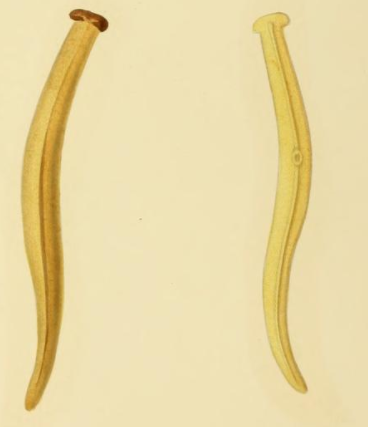
Drawings by Schmarda of Sphyrocephalus dendrophilus.
In the next year, 1860, Edward P. Wright did something similar and described some hammerhead worms from India and China, creating a new genus, Dunlopea, for them. The name was a homage to his friend A. Dunlop (whoever he was).

Wright’s Drawing of Dunlopea grayia (now Diversibipalium grayi) from China.
Eventually those errors were perceived and all species were put in the genus Bipalium, along with several others described in the following years. All hammerhead worms were part of the genus Bipalium until 1896, when Ludwig von Graff decided to improve the classification and divided them into three genera:
1. Bipalium: With a head having long “ears”, a well developed head.
2. Placocephalus (“plate head”): With a more semicircular head.
3. Perocephalus (“mutilated head”): With a shorter, rudimentary head, almost as if it had been cut off.
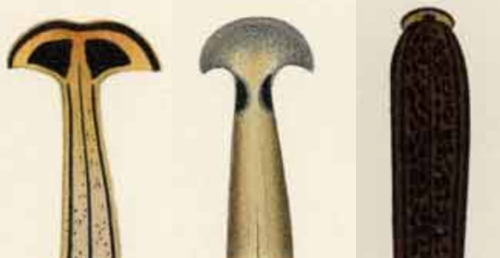
Compare the heads of typical species of Bipalium (left), Placocephalus (center) and Perocephalus (right), according to Graff.
This system, however, was soon abandoned and everything went back to be simply Bipalium and continued that way for almost a century, changing again only in 1998, when Kawakatsu and his friends started to mess with the penises of the hammerhead worms.
First, in 1998, they erected the genus Novibipalium (“new Bipalium“) for species with a reduced or absent penis papilla, and retained in Bipalium those with a “well”-developed penis papilla. It is worth noticing though that this well-developed papilla is not much bigger than a reduced papilla in Novibipalium. In both genera the actual, functional penis is formed by a set of folds in the male atrium and not by the penis papilla itself as in other land planarians that have a penis papilla.
Later, in 2001, Ogren & Sluys separated some more species of Bipalium in a new genus called Humbertium (after Aloïs Humbert, who described most species of this new genus). They were separated from Bipalium because the ovovitelloducts (the ducts that conduct the eggs and vitellocites) enter the female atrium from ahead, and not from behind as in the typical Bipalium. This separation is, in my opinion, more reasonable than the previous one.
Now we had three genera of hammerhead worms based on their internal anatomy, but several species were described without any knowledge of their sexual organs. Thus, in 2002, Kawakatsu and his friends created one more genus, Diversibipalium (the “diverse Bipalium“) to include all species whose anatomy of the sexual organs was unknown. In other words, it is a “wastebasket” genus to place them until they are better studied.
Are these three genera, Bipalium, Novibipalium and Humbertium, as now defined, natural? We still don’t know, but I bet they are not. A good way to check it would be by using molecular phylogeny, but we don’t have people working with these animals in their natural habitats, so we do not have available material for that. Another thing that can give us a hint is to look at their geographical distribution. We can assume that genetically similar species, especially of organisms with such a low dispersal ability as land planarians, all occur in the same geographical region, right? So where do we find species of each genus? Let’s see:
Bipalium: Indonesia, Japan, China, Korea, India.
Novibipalium: Japan.
Humbertium: Madagascar, Sri Lanka, Southern India, Indonesia.
Weird, right? They are completely mixed and covering a huge area of the planet, especially when we consider Humbertium. We can see a tendency, but nothing very clear.
Fortunately, some molecular analyses were published (see Mazza et al. (2016) in the references). One, which included the species Bipalium kewense, B. nobile, B. adventitium, Novibipalium venosum and Diversibipalium multilineatum placed Diversibipalium multilineatum very close to Bipalium nobile, and they are in fact very similar, so I guess that we can transfer it from Diversibipalium to Bipalium, right? Similary, Novibipalium venosum appears mixed with the species of Bipalium. I guess this is kind of messing things up one more time.
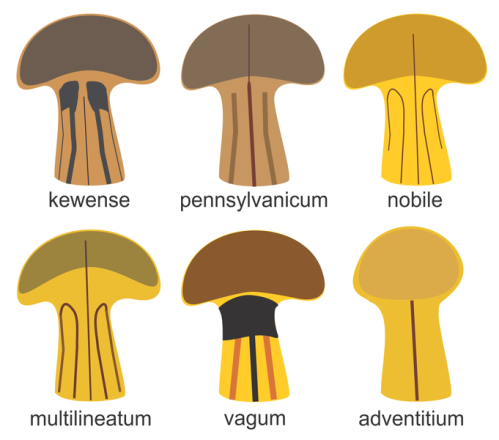
Head of some species of Bipalium, including the ones used in the study cited above. Unfortunately, I couldn’t find a photo or drawing of Novibipalium venosum. Image by myself, Piter Kehoma Boll.**
Interestingly, among the analyzed species, the most divergent was Bipalium adventitium, whose head is “blunter” than that of the other ones. Could the head be the answer, afterall? Let’s hope that someone with the necessary resources is willing to solve this mess soon.
– – –
Like us on Facebook!
– – –
See also:
Once found and then forgotten: the not-so-bright side of taxonomy.
The lack of taxonomists and its consequences on ecology.
They only care if you are cute. How charisma harms biodiversity.
The faboulous taxonomic adventure of the genus Geoplana.
Darwin’s Planaria elegans: hidden, extinct or misidentified?
– – –
References:
Graff, L. v. (1896) Über das System und die geographische Verbreitung der Landplanarien. Verhandlungen der Deutschen Zoologischen Gesellschaft, 6: 61–75.
Graff, L. v. (1899) Monographie der Turbellarien. II. Tricladida Terricola (Landplanarien). Engelmann, Leipzig.
Kawakatsu, M.; Ogren, R. E.; Froehlich, E. M. (1998) The taxonomic revision of several homonyms in the genus Bipalium, family Bipaliidae (Turbellaria, Seriata, Tricladida, Terricola). The Bulletin of Fuji Women’s College Series 2, 36: 83–93.
Kawakatsu, M.; Ogren, R. E.; Froehlich, E. M., Sasaki, G.-Y. (2002) Additions and corrections of the previous land planarians indices of the world (Turbellaria, Seriata, Tricladida, Terricola). The bulletin of Fuji Women’s University. Ser. II, 40: 162–177.
Mazza, G.; Menchetti, M.; Sluys, R.; Solà, E.; Riutort, M.; Tricarico, E.; Justine, J.-L.; Cavigioli, L.; Mori, E. (2016) First report of the land planarian Diversibipalium multilineatum (Makino & Shirasawa, 1983) (Platyhelminthes, Tricladida, Continenticola) in Europe. Zootaxa, 4067(5): 577–580.
Ogren, R. E.; Sluys, R. (2001) The genus Humbertium gen. nov., a new taxon of the land planarian family Bipaliidae (Tricladida, Terricola). Belgian Journal of Zoology, 131: 201–204.
Schmarda, L. K. (1859) Neue Wirbellose Thiere beobachtet und gesammelt auf einer Reise um die Erde 1853 bis 1857 1. Turbellarien, Rotatorien und Anneliden. Erste Hälfte. Wilhelm Engelmann, Leipzig.
Stimpson, W. (1857) Prodromus descriptionis animalium evertebratorum quæ in Expeditione ad Oceanum, Pacificum Septentrionalem a Republica Federata missa, Johanne Rodgers Duce, observavit er descripsit. Pars I. Turbellaria Dendrocœla. Proceedings of the Academy of Natural Sciences of Philadelphia, 9: 19–31.
Wright, E. P. (1860) Notes on Dunlopea. Annals and Magazine of Natural History, 3rd ser., 6: 54–56.
– – –
*
This work is licensed under a Creative Commons Attribution-NonCommerical-NoDerivs 2.0 Generic License.
**
This work is licensed under a Creative Commons Attribution-ShareAlike 4.0 International License.
